Hey guys, this is Nikki, Lead Veterinary technician with Posh Dog Knee Braces. So, today I would like to talk about probiotics for your dog. Let’s face it, we have all had a dog with diarrhea or gastritis at one point, and it is not fun. Weather you have a new puppy, and are switching to a better quality puppy food, or a dog that maybe likes to dumpster dive, or one that licks out of that gross water puddle on your walk, probiotics may be a good option for you.
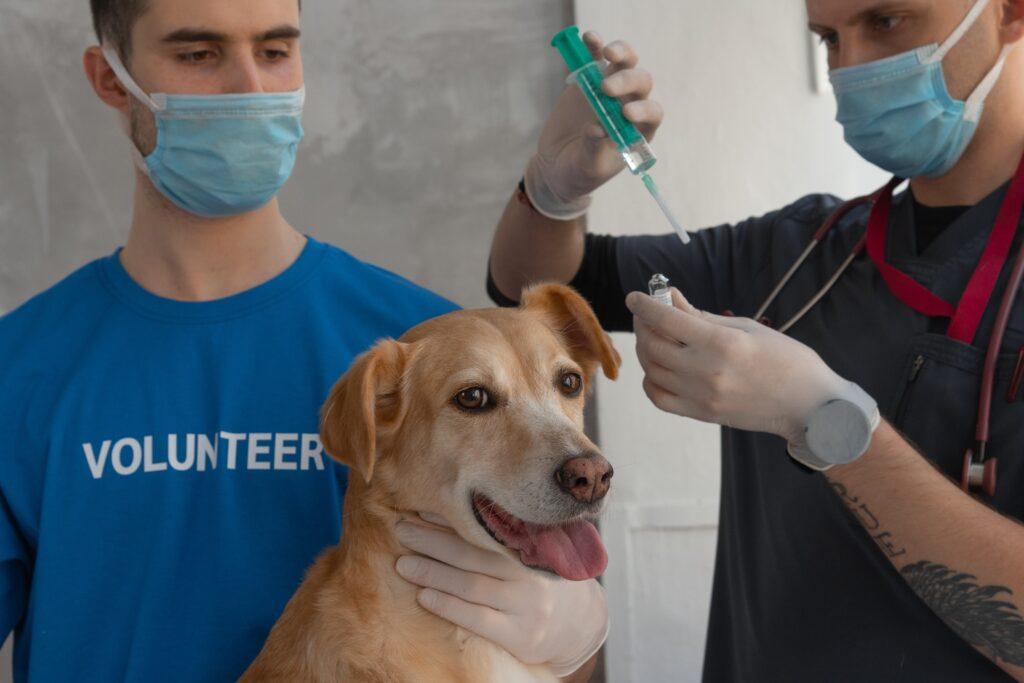
They help with diarrhea, intestinal upset, and can also help with dog allergies. If you have a female dog, they may also help in countering UTI’s, or even anxiety. Some dog food manufacturers are getting on the probiotic train, and may already be adding this to their diet, especially some of the Raw food diets out there.
I like to give my dog probiotics proactively, such as before I leave on a trip, if there will be a petsitter coming. That is a stressful event, and I don’t need my dog to get a stressful tummy, or anxiety. They can also be given as a daily part of long-term health.
Did you know that 70% of your dog’s immune system is their GI tract? It goes the same for people in that sense. So, by taking care of your dog’s tummy, it makes for an easier transition if they need to take pain medications, supplements, stressful events coming up, or if they have acute diarrhea. I typically will give at least 7-10 day course for a dog with loose stool/diarrhea, or a new puppy. They can really help in prevention of stress colitis, and that very expensive veterinary visit that follows. You can also add a tablespoon of canned pumpkin along with the probiotics if treating diarrhea, such as a new puppy.
The good news is that there are lots of great probiotics available both by your veterinarian and online. I really like Fortiflora personally, by purina, however, Zesty Paws also has a really nice product. Just do your research, and make sure they have good reviews before purchasing. Let me know if you have any questions, poshdogkneebrace.com or you can visit our Facebook page.
Read reviews check out our Google Reviews online. Click Here
Hey guys, this is Nikki, lead veterinary technician with Posh Dog Knee Braces, and today let’s talk about pain in our dogs. I hear so often owners say they don’t feel their dog is in pain, or that they don’t know what to look for. Today I would like to cover things to look for, and how to see those subtle hints your dog is giving you.
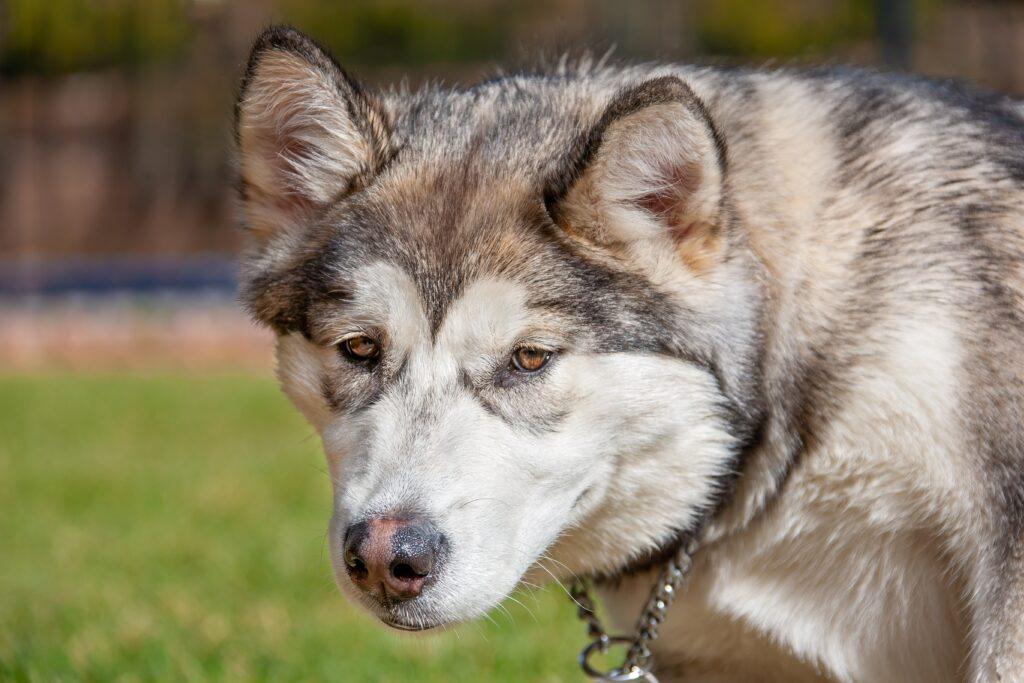
First, does your dog show any signs of panting, licking a certain area or paw/leg, pacing, trouble laying down or standing, chewing an area, legs shaking/body shaking, trouble standing from a laying position, holding a leg up, low whimpering/whining, growling or biting out of character, flinching when touched in an area? If you can answer yes to any of these symptoms, there is a good chance your dog is experiencing discomfort.
Dogs are extremely stoic, which means it is against their nature to show they are hurting outwardly like we would. A child is easy, they will hold the sore area, cry, and tell us what happened or that it hurts them. With our dogs, it can be a bit of a challenge to identify if they are in pain, and when to give the appropriate relief.
One of the most painful injuries to a dog is a CCL injury. This is significant agony, and your dog needs proper relief to get them through the first few weeks. There will be a lot of swelling present, and they may be cranky and sore during this time.
The first 2-3 weeks it is important to keep them on some form of anti-inflammatory. I hear a lot of people learn about nsaids, and immediately take their dog off of them within the first 1-2 weeks of an injury, stating their dog doesn’t look in pain any longer. I understand not wanting nsaids, however, I guarantee your dog is still in pain within the first 3 weeks of this injury. There are other alternatives to nsaids, which I go over in another blog, but that does not mean to withdraw all pain relief.
If suddenly taken off of pain relief, dogs (like people), will experience something called withdrawal. This means that their body is shocked with sudden pain, that has not been effectively treated, and it will be very difficult to get them feeling better without a strong med like a narcotic, something to calm and partially sedate them until pain management is achieved. So, please do not suddenly remove pain relief without having something else to start. If stopping an nsaid, you need to wait at least 24 hours before starting something like willow bark, to make sure the tummy does not get upset, and sometimes waiting for severe pain to stop before doing so might be best.
I always suggest resting 2-3 weeks, even if we are fast and you receive the brace in the first couple weeks of the acute injury, still wait a bit to begin walks. Give your pup time to get through the painful parts, then we can start bracing and PT. They will get better, and feel better, but it is our job as their owner to keep them comfortable. It will make all of our jobs much easier as we begin recovery.
Please let me know if you have any questions about how we can help your dog live a happy and pain-free life, poshdogkneebrace.com, or email me at poshintake1@gmail.com or visit our Facebook page.
Let Your Dog Recover With Our Custom Dog Knee Brace! We’ve Helped Thousands Of Dogs, Now We Want To Help Yours…
Read reviews check out our Google Reviews online. Click Here
Hey guys, Nikki lead veterinary technician with Posh Dog Knee Braces here. Today, lets discuss what a luxating patella is, and what that means for our pups. First off, a luxating patella simply means that the kneecap is not staying in the nice little happy groove that it was meant to on the femur. There is a groove, like a valley, cut out in the femur, that the kneecap is supposed to stay inside. A kneecap, or patella, is only supposed to glide in that grove up and down, as our pup bends the knee, just like our kneecaps do.
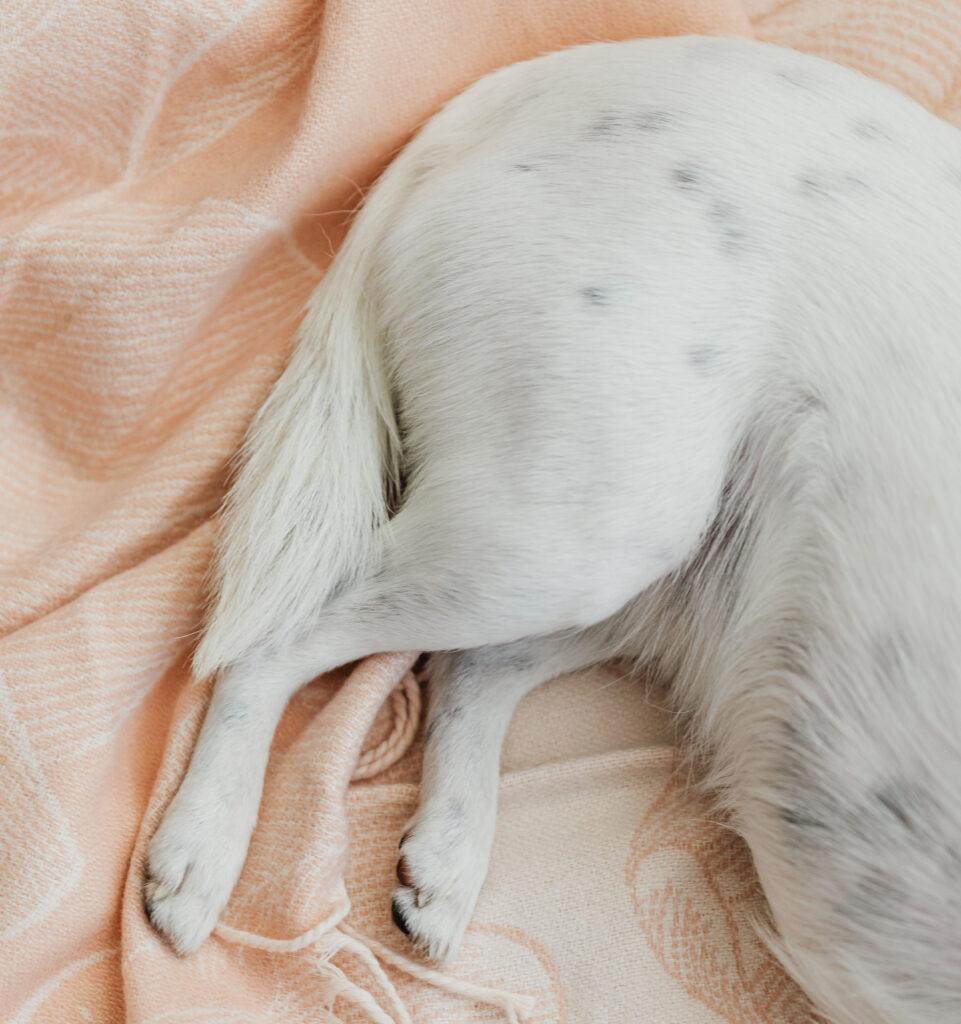
Unfortunately, due to sometimes genetics, this groove is too shallow for the kneecap to be happy and stay put. Also, if the patient has a bow to the femur or leg, the tendon that holds the kneecap in place, makes that kneecap straight up and down. Well, this causes an issue if our dog in fact has a crooked or bowed femur.
Certain breeds are more pre-disposed to this issue, and those would be most poodles, yorkies, chihuahua, bulldogs including smaller bulldog breeds, spaniels, terriers, and even some large breeds. Some of the signs we will see is intermittent hind limb skipping, lameness, stretching the leg out behind them. The more a kneecap moves out of place, the worse the issue gets.
There are 4 grades of lameness for these guys. Grade 1, the kneecap comes out of position, but is easily put back into place. This usually does not cause an issue for the dog, and minor symptoms. Grade 2 the kneecap shifts out of position with pressure, and can remain displaced until adjusted. There may be damage to cartilage on these from moving out of place. Grade 3, the kneecap is disjointed most of the time, but can be returned to normal position, however, once pressure is removed it luxates back out. Dogs will exibit some lameness, and cartilage damage. Grade 4, the kneecap is permanently dislodged from position, and can impair limb function.
Some dog’s with a luxating patella are more prone to having a CCL tear, and so we may suggest bracing them as a grade 2 or less, in order to help support the knee and take some pressure off the knee. Bracing will not hold the kneecap in place, such as for a grade 3 or 4, but will provide some stabilizing of the joint itself, helping to prevent the CCL tear.
Most grade 1 or 2 can be managed conservatively with supplements and rehab, possibly bracing. Unfortunately, if the grade is 3 or above, sometimes they do need surgery to correct the issue, such as deepening that groove the kneecap sits on, or moving the actual tibial bone laterally, which makes the kneecap sit much better in the groove.
If your dog does have surgery, it is recommended to brace post op, to restrict pressure on the knee, otherwise the patient must be restricted to a kennel or crate. PT is really helpful as well.
Thank you, and please visit Poshdogkneebrace.com with any questions about Luxating Patella or you can visit our Facebook page.
Read reviews check out our Google Reviews online. Click Here
Hey guys, this is Nikki, Lead Veterinary technician with Posh Dog Knee Braces. So, today I would like to talk about Laser Therapy for Dog’s with knee injuries ACL/CCL, or arthritis, and how it can help! First off, what is Laser therapy? Laser therapy is taking a simple beam of light to penetrate deep into the tissues and produce positive tissue changes. First used on hair regrowth, Laser therapy has been a growing success.
There are 2 types of treatment you will hear. Cold laser, which focuses on the surface of the skin, and blood circulation, while hot laser are for deeper tissues. Hot laser should only be done by medical professionals, as it is used for cutting and burning, as well as healing.
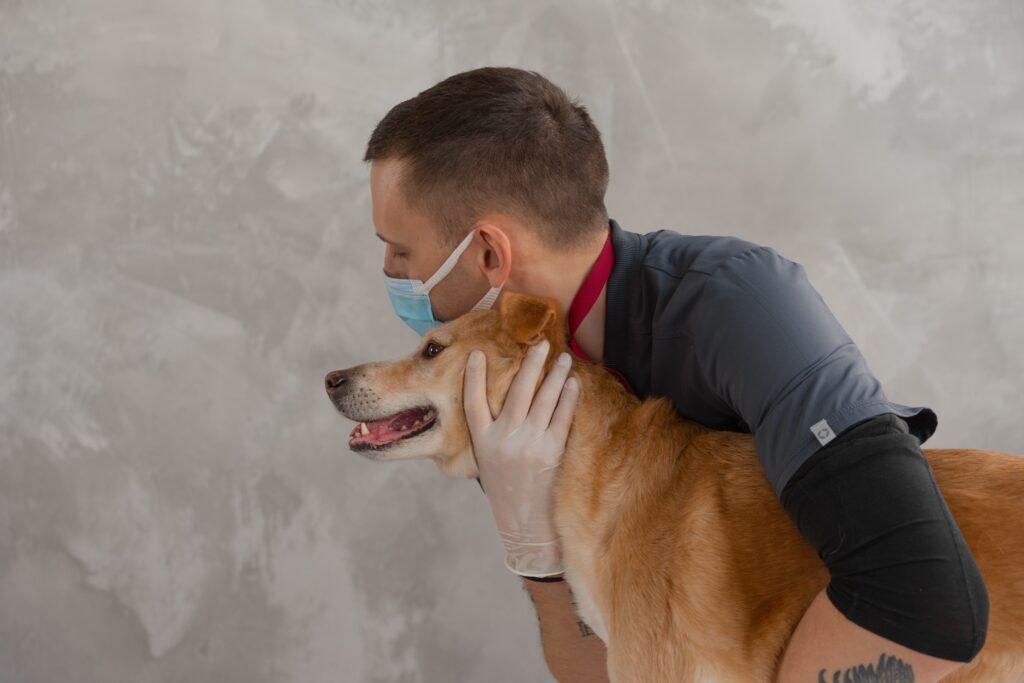
In most practices, we use low-level laser, or class IV laser therapy. Depending on the class of the laser, will tell you if it is something you can do from home or by a clinician. Quality laser equipment is very expensive, thus most will opt for therapy with their holistic vet, chiropractor, or veterinarian.
So, how do dogs react to having laser therapy done? They find it very relaxing. Laser therapy releases endorphins, so dogs usually find it relaxing and positive. Another benefit, is that your dog will not need to be sedated for laser, they can be resting and wide awake. There is no need to clip the hair away either, like other treatments. There is usually no side effects, the type of lasers used should not cause any burns to the skin.
So how will this help a dog with a ccl tear? Cold laser therapy for dogs with cruciate ligament injuries, restore health to damaged tissue cells by stimulating their ability to grow and survive, and heal naturally. It helps relieve pain and limping as well. If used with conjunction with an orthotic (brace) this would give your pup a good chance of fully recovering with less pain.
Please call or email with any questions! Poshintake1@gmail.com, or 509-412-3065. You can also leave us a message on our contact form or visit our Facebook page.
Thanks!
Read reviews check out our Google Reviews online. Click Here
This is about half of the people I speak with on a daily basis. Puppies are wonderful, and really do bring our families and other dogs joy, but sometimes that comes with a cost. Whether you bring home the puppy before an injury on your older dog, or after, we still need to be careful when they play. Rough play, such as puppy jumping on their back or playing tug of war, can result in new injuries, or aggravating an older injury. Puppies bring on a youthful playing with our older dogs, which is fun to watch, however, it can encourage injuries, so please be careful.
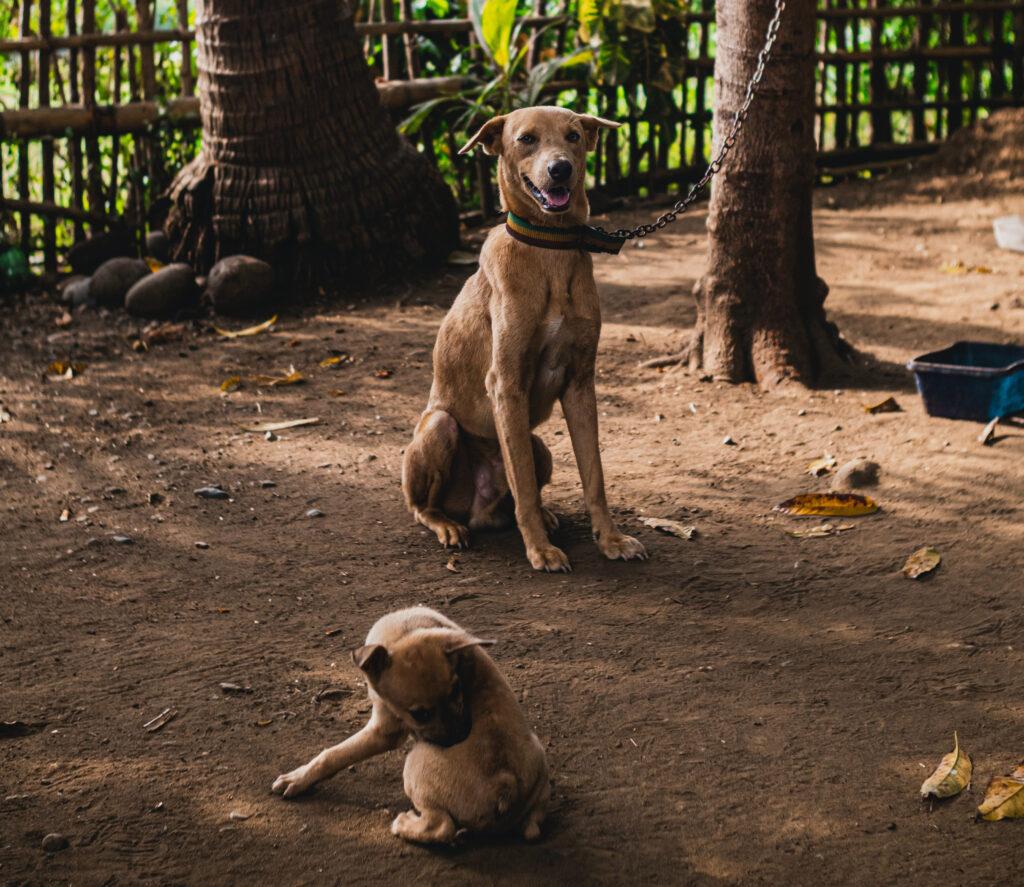
Choose a breed carefully. If, for example, you have a small breed older animal, and bring home a large breed puppy, there is going to be some potential to be injured. Puppies, as part of play, will try to jump on the other dog’s back. This is their natural tendencies trying to establish dominance. Well, if your poor older animal has hip or knee issues, you can imagine that this may not be the best case scenario. Thus, it is important, to only let them have supervised play times, and not be left alone to rough play all the time.
This is especially true if your other pet has a recovering knee injury. Not only is it going to be tough to get that knee to recover with a puppy wanting to play, but the puppy will also be very curious about this really cool chew toy on their leg! So, again, supervision at all times is going to be needed. I’m not saying you can’t get a new puppy, but think the scenarios through before you adopt. Or, perhaps look into adopting an older doggy instead of a new puppy.
Puppies are going to be growing and teething for at least a year, if not more. This means their energy will be high, and your injured dog’s tolerance for this may be low. Make sure you have the means to keep them separated when you are not home or there to supervise, because that would not be otherwise fair to your older injured dog.
Get lots of fun distracting toys for the puppy to play with (and don’t forget your older pup!). This really helps keep them distracted, and happy. If your older dog has a posh brace on, to support a CCL injury, it is ok to have them play for a little while with the puppy, but only directly supervised. The brace does act as a shock absorber, so a little play is ok, but no running or jumping while playing. My puppy likes to stand up on her back legs to “box” with my other dog. This would not go over well if my other dog had an injured leg.
Again, feel free to check us out at poshdogkneebrace.com, or email us through our contact form or visit us on our Facebook page.
Read reviews check out our Google Reviews online. Click Here
Genetics do factor in sometimes on whether our dogs will have a CCL tear or not. Such as, I don’t see tears as much in sporting breeds like springer spaniels or setters, but do in rotties and newfies. Not saying I have never had a sporting breed like springer or setter come in with an acute injury, but I don’t feel their genetically prone to the issue like other breeds are.
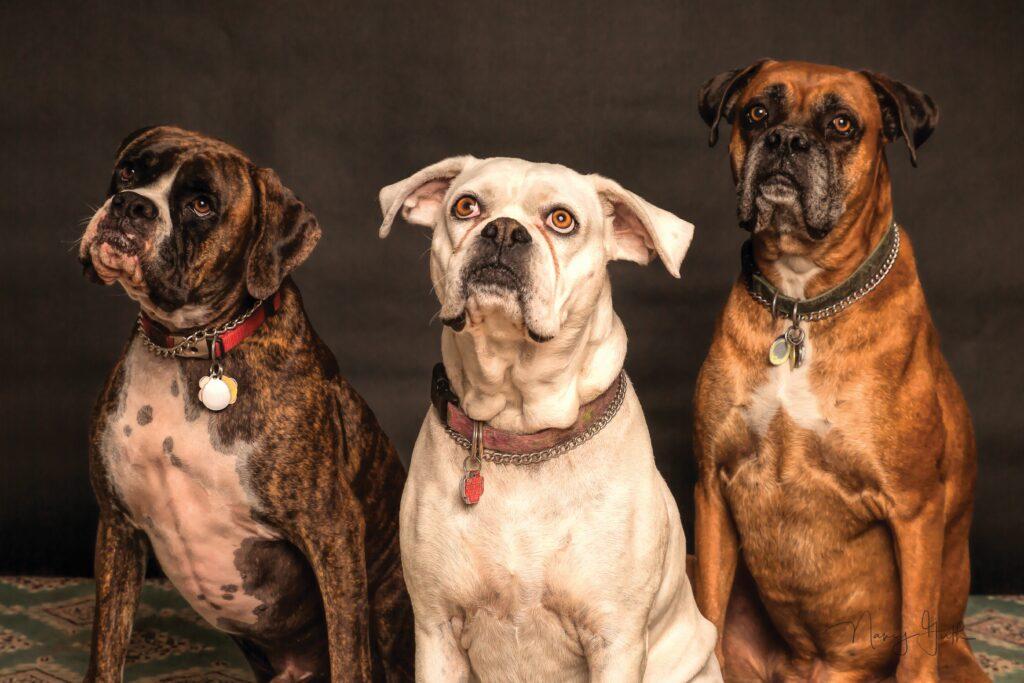
The following breeds have much higher chances of CCL injuries, including bilateral injuries. Mastiffs, Newfoundlands, akitas, St. Bernard’s, rottweilers, Chesapeake bay retrievers, American Staffordshire terrier, and laborador retrievers. Also Golden retrievers seem to also be affected more often that smaller breeds.
Toy breeds tend to have luxating patella issues, where the kneecap moves back and forth, thus causing concurrent CCL tears secondary to the LP issue. We do see a fair share of chihuahuas, maltese, shihtzu’s, and Pomeranians as well.
So what if your dog is on the list? What can we do? Well, there are a few things you can do. First off, don’t spay and neuter before they have reached maturity (~14 months), feed a breed appropriate diet with no bye products. Diet correlates to muscle and ligament growth so much, which is why it is so important to start your puppy out the right way, on a good diet. Preventing your dog from jumping in the air to play fetch, or turn corners too sharply.
Instead, roll the ball on the ground for them to run after. Getting them on a good bone supplement may help, we need to feed those growing ligaments all the goodies we can, and sometimes they need more than their food will provide.
Bones with marrow are great, bone broth is great, shark cartilage is good. There are many things you can give that are good for your pup. Taking your dog on regular leashed walks, and exercising them properly will also help. Especially with our more lazy breeds, you know who you are! 😊
Dogs with more bowing in the knee tend to also get tears more frequently, such as rottweilers and any staffy breeds. Again, try to keep these pups from jumping or rough play, as that can put stress on the joints.
Let us know if you have any questions, poshdogkneebrace.com, or email me on our contact form or visit our Facebook page.
Read reviews check out our Google Reviews online. Click Here
Today I want to talk about hair length, and if it is necessary to shave your dog for our our brace. For the measurement call, we need to be able to see all the bumps in the knee. The hair needs to be less than 1” in length.
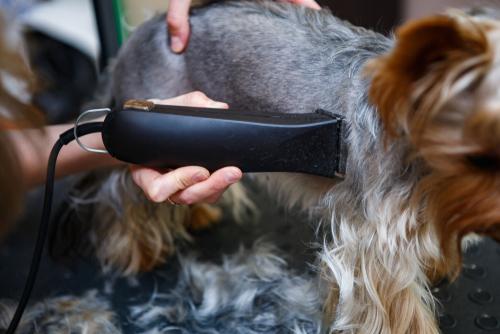
If you have a curly haired dog, you can try wetting down the hair in order to find the bumps. You will also need to make sure you can see those bumps and landmarks clearly for when you are fitting the brace.
If your dog has shorter hair on front of the leg, and feathering behind the thigh, you are probably ok. For dogs that have very long hair, like newfies or Great Pyraneese, they will need legs trimmed/shaved down to the ankle, otherwise we can’t see landmarks to help you measure. Let us know if you have any other questions, you can reach us at our contact page or visit our Facebook page.
Nikki, Posh Lead Veterinary Technician
Read reviews check out our Google Reviews online. Click Here
Today I would like to talk about recommended activity levels with a brace or CCL tear. It is still important to remember that this is not a race.
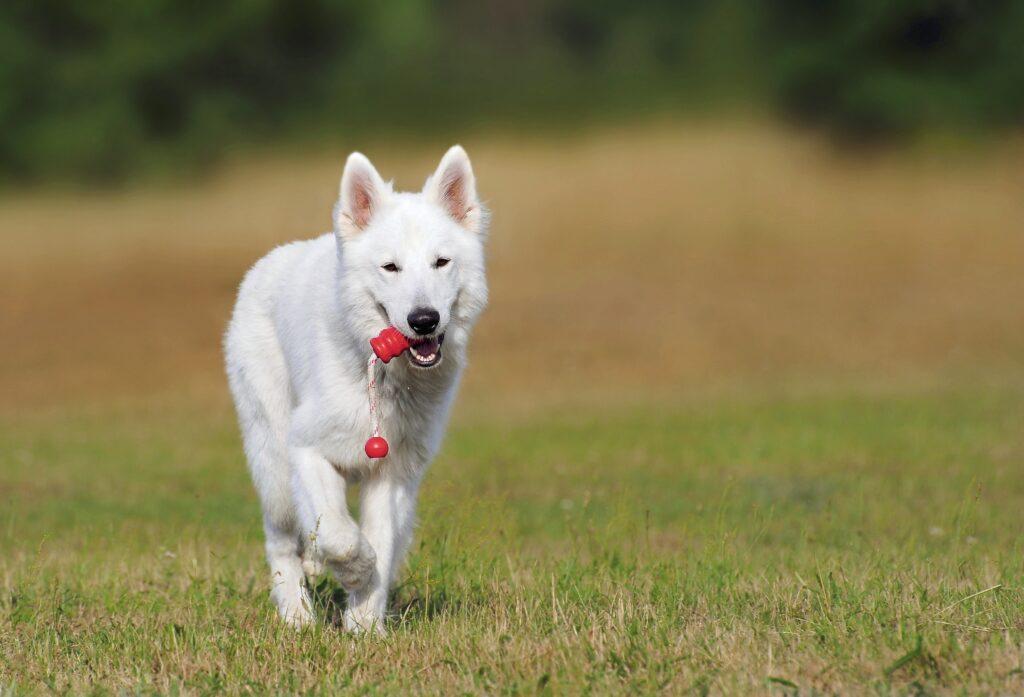
Initially, we start with walks and light physical therapy and massage. Gradually, we can increase activities, such as adding hills or inclines to the walk, sit stands, more muscle building activities.
It is not recommended to let your dog run off leash while in recovery. This can lead to injury of the other leg potentially. Braced walks are meant to be nice and slow, not a jog. The goal is to have your dog placing full weight down on his leg. If you walk or run too fast, they will skip and not place full weight on the leg.
We will get to a point where your pup can play off leash, but ask first, and take things slow. Feel free to email or send in a contact request with any questions about what levels of activity is right for your dog, we are happy to help! You can reach out to use through our contact form or visit us on our Facebook page.
Give Your Dog a Big Hug From Us!
Nikki, Posh Lead Veterinary Technician
Read reviews check out our Google Reviews online. Click Here
Today I want to discuss signs that your dog has a CCL tear, and if he or she needs a brace. First, obviously your poor dog is exhibiting signs of hind limb lameness. Now this can happen two ways. First, you hear a yelp, or see the injury, and have sudden onset lameness. This is about 50% of dogs, and is called an acute injury. Your pup will not use his or her leg, and is toe touching.
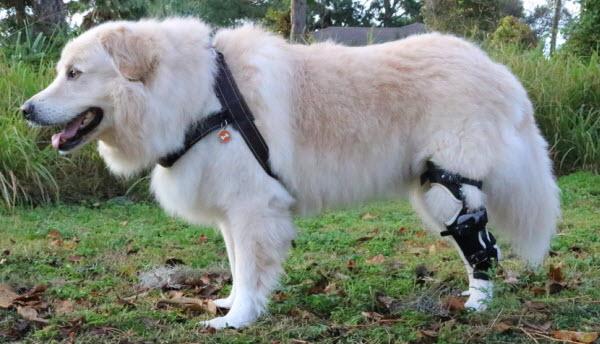
Second, you notice your dog limping on the hind leg after exercise, and after rest seems better. This goes on for a few weeks until you have a veterinarian diagnose the injury as a CCL full or partial tear. Some of these patients go a year or longer before getting to full limping. This is a chronic case, and usually degenerative.
We can help with either situation, as even a partial tear will keep re-injuring over and over until externally supported with a brace.
After a while you may notice a medial buttress, or a hard bump on the inside of the knee. This is a sign of cruciate injury as well.
No matter how long you wait, it is never going to be too late to brace your dog, as bracing will help stop the offloading that is happening, and we can start working on that thigh muscle to reverse the atrophy. Let us know if you have any further questions about this topic, and always feel free to send me a contact request, I am happy to chat with you and answer some of your questions you can reach out to me on our contact form or visit our Facebook Page.
Nikki, Posh Lead Veterinary Technician
Read reviews check out our Google Reviews online. Click Here
First off, I want to do a bit of anatomy explaining. Dog’s, unlike people, walk on their toes. Cool, right? So coming up from the ground, you can follow their toes to their ankle, which includes the hock bone in the back of the bend. This is their “heel” bone. The next bone, in front of the ankle, and up to the knee, is the Tibia and fibula. The tibia thrust, just like in people, is what makes up the front of our knee. There is a prominent bump in dogs, directly underneath the kneecap, that is called the Tibial Tuberosity.
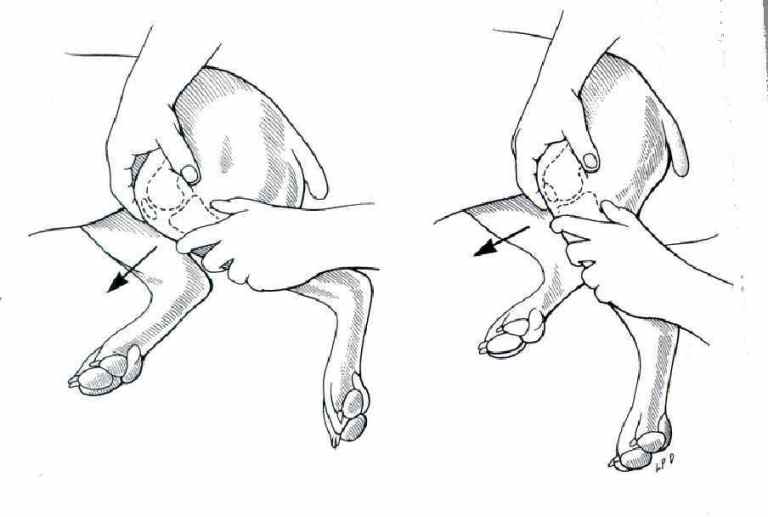
In the videos attached, you will see the kneecap is a small round bone, making up the top of the dog’s knee, then the bottom bone is the tibia. The cruciate ligaments, or CCL in dogs/ACL in humans, are located between the tibia and femur bones, directly in the back of the knee. When a CCL is in tact, there should be no movement, or positive drawer sign, in the dog’s knee. See video one, where there is no movement when palpated/moved.
In the next video, you can see what happens when there is no longer a ligament holding the bones together in the back of the knee. Now, the tibia bone is able to shift forward, or tibial thrust. This is a positive drawer sign, as there is a forward movement now where the tibia is shifting forward. This is obviously bad.
If you choose to do nothing, over time this movement of the bones will potentially cause the meniscus to tear/rupture, and start to form arthritis. It is important to immobilize this joint, to prevent these issues from occurring. Not to mention, that movement is very painful.
After 9-12 months of using a Posh Brace, this movement should be back to the first image, as fibrous tissue has formed and will re-stabilize the joint. Again, check out our website, poshdogkneebrace.com, or feel free to email me any questions to: our contact form or visit us on Facebook.
Read reviews check out our Google Reviews online. Click Here
We get asked this question a lot, and wanted to see if we can answer some questions on diagnosing a CCL tear. Is it necessary to have a diagnosis before purchasing a brace? Answer: Yes! There are many other things, like sprains, hip joint pain, spinal issues, tumors, and nerve issues like DM that can cause hind lime lameness other than a ruptured CCL.
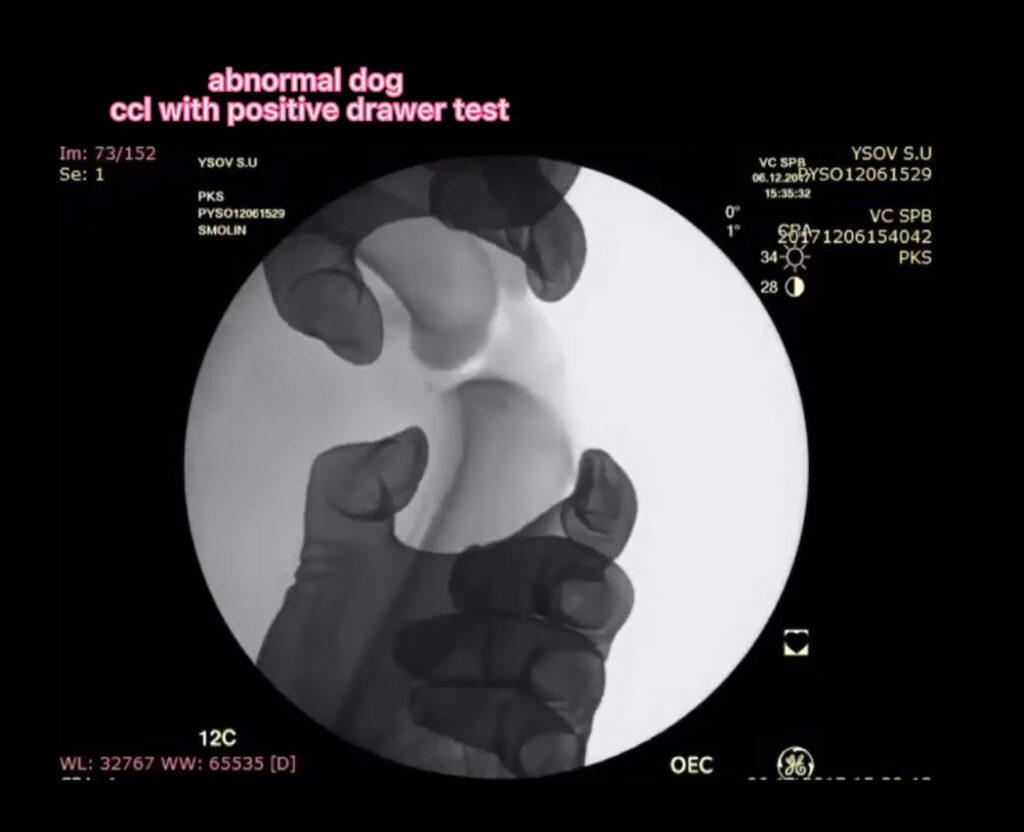
At your appointment with the veterinarian, they will most likely want to do what is called a drawer test. Please note: this could worsen the injury if not done properly, or with sedation, and is very painful. Some patients will let out a yelp, or limp much worse after the examination.
Your veterinarian may also want to do some radiographs during the initial examination. These can show gaps, space, swelling, and rule out tumors in older patients. I do recommend radiographs for any patient over 8 years old.
MRI is the absolute best way to diagnose a CCL tear, however, this can cost upwards of $1,000, and may be hard to find someone to do this.
Find a veterinarian that is gentle, and will do a thorough exam ruling out the other injuries. This is the best method, and least painful for your pup. Also, try taking the last appointment of the afternoon when possible, or the first in the morning, as this is when most veterinarians are less likely to be in a “rush.” Right before lunch break, or in the late morning/afternoon can be rushed due to their surgical load that day, or if they have other patients that have been dropped off to be seen.
We leave the diagnosis up to our clients, it is not required, however, I do recommend at least finding a holistic minded veterinarian to help you! If you need more information on CCL tears you can reach us through our contact form or visit our Facebook Page.
Nikki, Posh Lead Veterinary Technician
Read reviews check out our Google Reviews online. Click Here
Hi! Today I would like to talk about muscle atrophy in dogs, especially with CCL injuries. One of the biggest muscles in the body is the thigh muscle, which is needed in order to have full range of motion with the hind legs.

Without this muscle, we would be unable to completely lift our leg up and take a normal step. Dog’s that have an injury atrophy quickly. This is why it is really important to keep our patients active, while still letting the knee injury stabilize. With bracing, we are still able to place full weight on the thigh muscle, which may become sore initially, however, then we can start building this muscle back up, keeping it healthy.
This is another reason bracing can be better for patients than surgery, as with surgery there is a long period where you will need to confine your dog to keep them from hurting the surgical site. In the 8 weeks it takes to recover with surgery, there can be significant atrophy that sets in.
This is another reason that we include physical therapy with our patients, and walking schedules, to keep our dogs active, and using those muscles.
You may also need the help of a sling or a harness that includes handles as well, so that you can help your dog walk initially, until we start getting strength back in the thigh muscle. Our technicians are happy to help you with this, and with time we can get the muscles back. If you need more information you can reach out to us through our contact form or visit us on our Facebook Page.
Read reviews check out our Google Reviews online. Click Here
Today I would like to go over what a CCL in a dog is, as well as it’s function. First off, a CCL in a dog is the same as saying ACL in a person.
The CCL is a connective tissue in the knee that stabilizes the lower leg to the upper leg. It connects the tibia to the femur. Without this ligament, there can be partial or complete joint instability, pain, and lameness present.
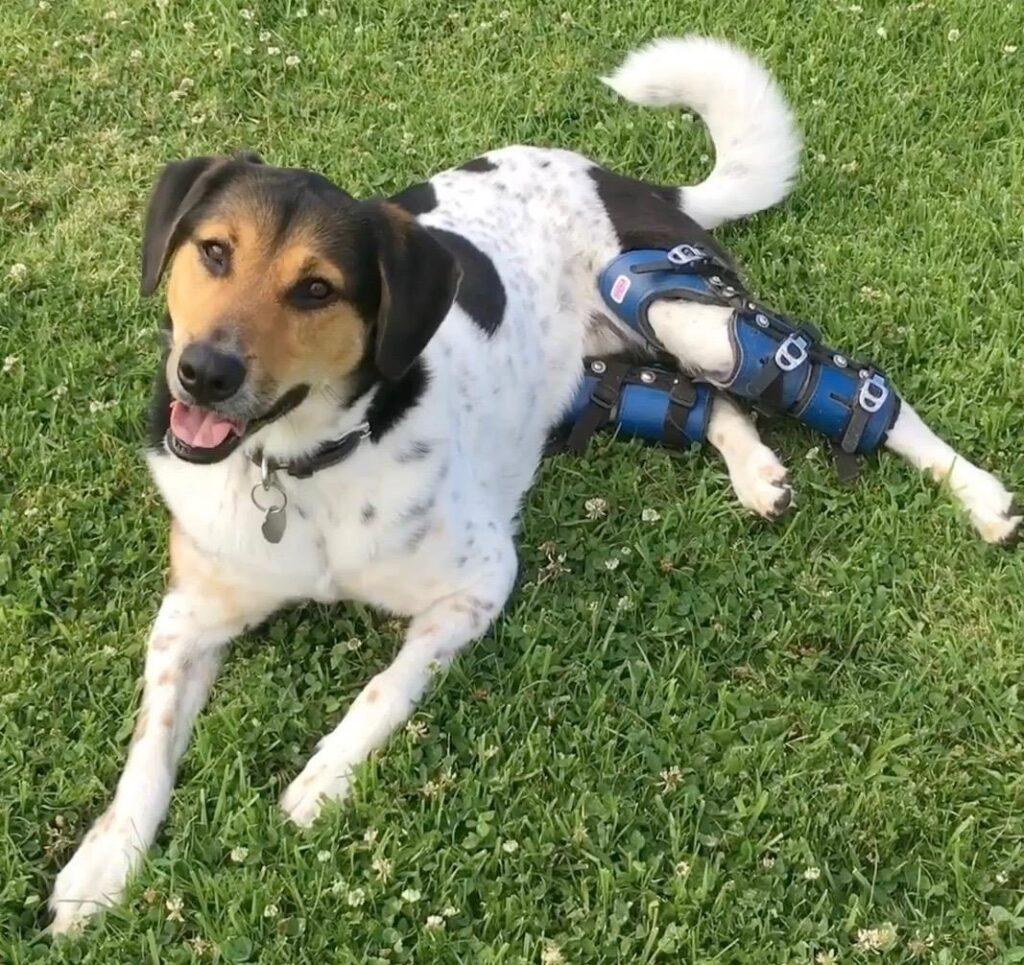
The CCL holds the tibia in place, andprevents internal rotation and hyperextension (which is over stretching the leg). The meniscus (located between the femur and tibia) absorb impact and provide a gliding surface between the femur and tibial plateau/tuberosity. Sometimes the medial meniscus can become torn when the knee is unstable from a CCL tear.
Symptoms of a rupture include crepitus (crackling or popping sound), decreased range of motion, hind leg extended when sitting (when the injured leg is off to one side), pain to the touch, not wanting to move as much, sore after a walk, swelling, and turning the leg out to the side when standing.
Leaving a ruptured ligament alone, without the aid of bracing, can leave misaligned joint causing further damage, inflammation, and pain. This can lead to early joint disease and further meniscus tears.
Bracing helps to hold the tibia in place, while acting as a buffer or shock absorber, preventing further movement and issues from occurring. If you need more information you can contact us through our contact form or visit our Facebook Page.
Read reviews check out our Google Reviews online. Click Here
Today let’s talk about how to train your dog to use or walk with the brace. First, I want you to use just the hock wrap, to let your pup get used to having something on his ankle. Do this for 30 minutes on and off the first couple of days.
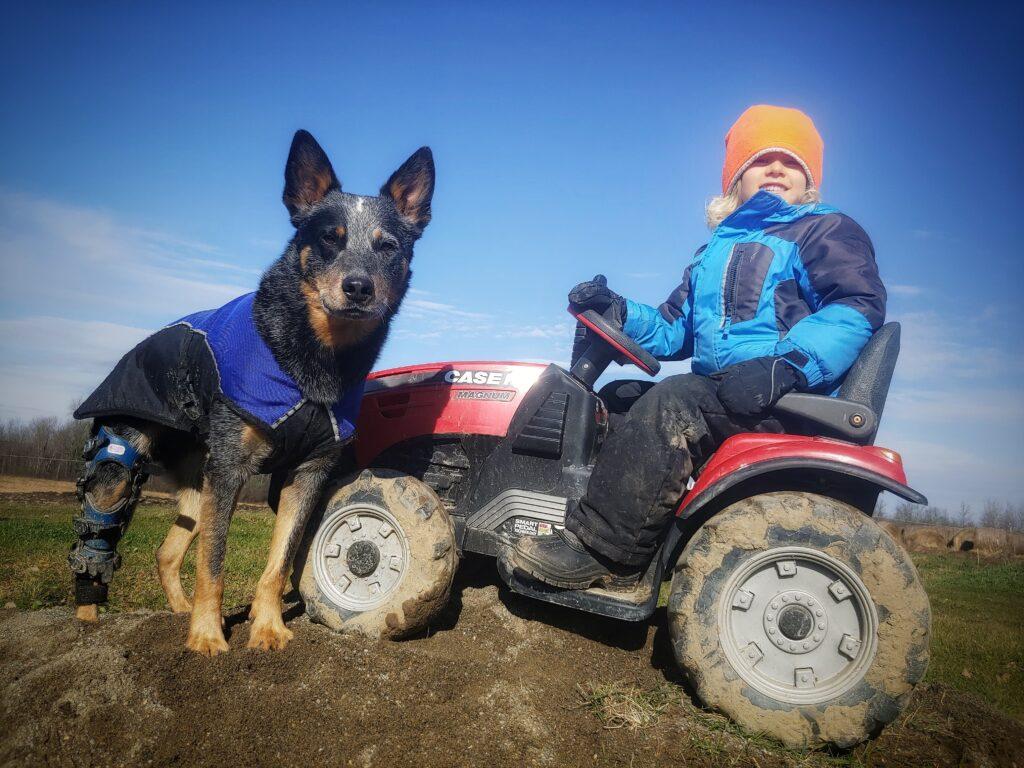
Next, I like to freeze peanut butter in a dish, and distract my dog while fitting the brace on, this will help train your dog to get used to you putting the brace on him.
Once you have a brace on, go directly outside and walk. Then, remove the brace when you come in. Distraction and treats work great while getting your dog used to wearing the brace.
Soon, your dog will link the brace to getting to go out for a W-A-L-K, something really fun.
Then, you can increase the wearing times as stated on our physical therapy handouts. Let me know if you have any questions you can contact us through our contact form or reach out to us on our Facebook Page.
Nikki, Posh Lead Veterinary Technician
Read reviews check out our Google Reviews online. Click Here
Today we want to talk and educate you on Meniscus tears, and what they mean for your dog. Say you just got back from a visit to your vet, to find out your dog has a CCL tear with a meniscal tear as well. Now what? Your vet I am sure has gone over all of the surgical implications for this problem I am sure, but have they explained what the meniscus is?
How important it is to have in our knee, or what the function is? No, most likely they have quoted you for removing the meniscus, and the CCL repair only. Now I do know many Veterinarians that will try conservative management first, and a very huge thank you to those vets!
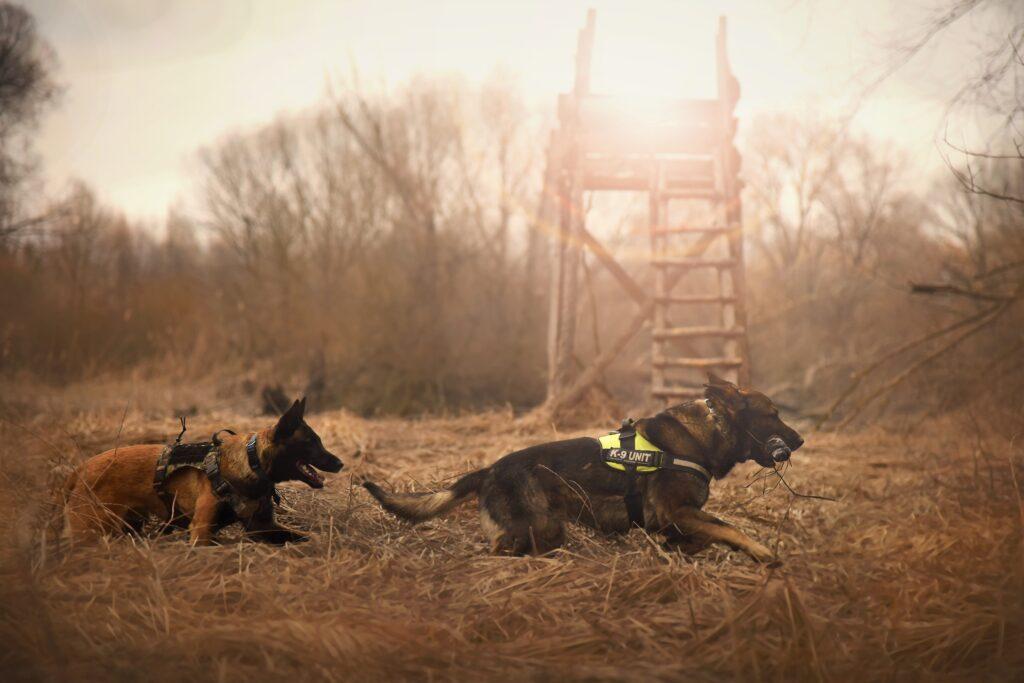
Well, you are in the right place. Our goal at Posh is to give you, as the dog mom and dad, options. Yes, you heard me, there are options with a Meniscus tear, not just surgery. Think of yourself for a minute. If you go into any orthopedic Doctors office, would they simply take an xray and schedule you for immediate removal of your meniscus? Absolutely not. There would be follow up appointments, probably an MRI to confirm, and then they would go over the options. Yes, there is that word again. Options.
Well, There are actually 2 menisci in each knee. The Menisci is a C shaped component made up of cartilage, and composed of collagen and joint fluid. 70% of the menisci is made of fluid that will compress with normal movement and release synovial fluid into the joint so that the knee can easily move. They act as our shock-absorbers and buffers, like in a car or truck.
With a CCL tear, it is very common to have a meniscal tear. There are several grades of tears, from a small tear, toa complete folding over of the meniscus. In most cases, the patient will have a minor tear. With this you may hear a pop or clicking sound. These tears are minor, and do well with bracing and Physical Therapy and Adequan Injections.
You can see now how it is very important not to completely remove the meniscus, as some vets may suggest prematurely. Now if the meniscus is folded over, usually you will see the knee sticking and unable to bend correctly. This is a surgical issue, and will need corrected.
Removing the meniscus almost always leads to arthritis and chronic lameness, as you just took out the joint’s buffer. Only if the meniscus has folded over, and I have seen this only twice in over 4,000 patients, will you need to consider removal.
It will take several months to heal, but healing is possible! Usually bracing for 12 months during activities, along with supplements and a good diet are enough to let the meniscus recover. Let us know if you have any questions, and we are happy to help your dog!
Nikki, Posh Lead Veterinary Technician
For more informaton please contact us through our contact form or visit our Facebook Page.
Read reviews check out our Google Reviews online. Click Here